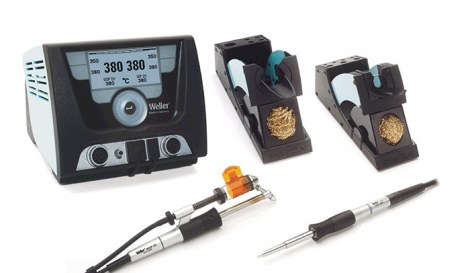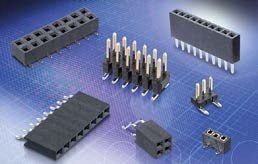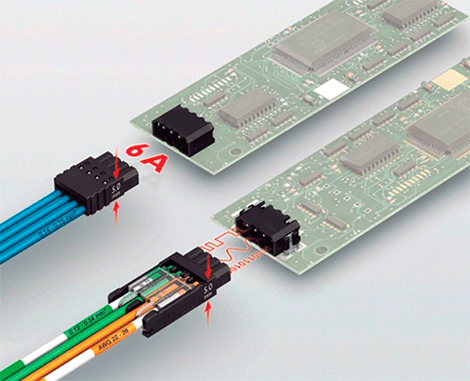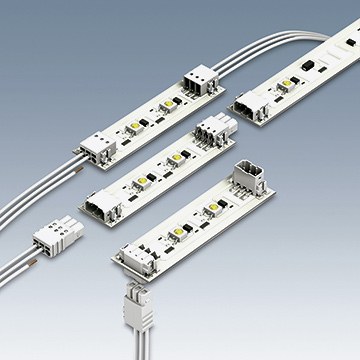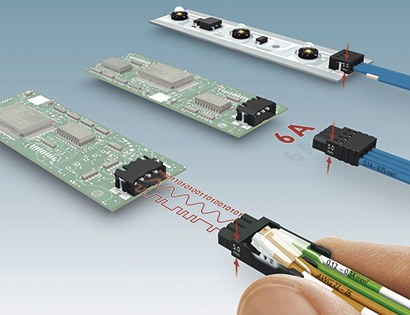With the miniaturization of new electronic boards and the evolution of new surface mount components (SMD, Surface Mount Device), the use of traditional mount components (PTH, Pin Through Hole) in modern circuits has been resized considerably. However, these PTH components are often found in increasingly arduous circuits due to the number of layers, the type of metallization and solder alloy, thermal masses, and degree of oxidation; If you can choose between different solutions to solder these components, to unsolder them the options are drastically reduced.
Whether it is called a desoldering iron, a pacifier or a desoldering pump, the function does not change. Whether you use the electronically controlled model, the simple model with a spring, the desoldering braid or the soldering iron to also desolder, the goal is always to remove the component. Over the years in the professional environment there have been several changes to improve the technology of these tools, but the improvements cannot be compared to what has happened for welders.
The market proposal is practically the same for ten years, with tools that are slow to heat up (on average, it takes more than 100 seconds to reach operating temperature), which are often clogged with tin or require a lot of maintenance. To achieve the best result, the advice is always the same: lowest possible temperature, choice of nozzle according to the dimensions of the hole in the circuit; if necessary add fresh tin beforehand to reactivate the solder already present and help yourself with flux and a preheating plate that raises the temperature of the circuit.
As for the soldering iron tips, care and maintenance of the nozzles is always important: tin the nozzle tip, clean with a dry system, after use completely discharge the duct that carries the solder from the nozzle inlet to the deposit; even following the best advice, satisfactory results are often not achieved.
traditional desoldering
Even today, especially in printed circuits used in power applications, it is easy to find PTH components (for example, electrolytics, transformers, switches, connectors) that in the rework phase require traditional "pin to pin" desoldering procedures. Above all, traditional desoldering had to face the increasing thermal requirement in the solder joints and often the limited performance and power of the tools present on the market (80W and 100W) did not allow to work guaranteeing the quality or the success of the operation. . Even the suction phase of the solder was extremely difficult in multi-layered holes with structured ground planes, a situation already very common in the automotive, radio frequency, medical, military and personal computer sectors.
In addition, the higher re-melting temperatures and the longer paste stages of the lead-free alloys currently used most frequently in the electronics industry are added (eg SAC 305 – 217 °C/225 °C or SC 99/1– 227°C/231°C). Temperatures also greatly affect the execution phases of the desoldering work, considerably lengthening the times of heat input to the joint (at least 4/5 seconds more with respect to lead alloys).
The RoHS alloy shows an affinity for high oxidation, so working according to the established automations during operations with SnPb alloy is the cause of frequent failures in the desoldering of the components to be inserted and of excessive maintenance and cleaning interventions in the nozzle duct desoldering irons
New technology, new power
The new WXD2 technology introduced by Weller and the modern and functional design of the XDS desoldering nozzles radically solve the problem, avoiding in every working condition that the suction duct is clogged by solidification of tin or by crystallized flux deposits.
The XDS desoldering nozzle keeps the solder liquid and allows flux residue to run into the collector mounted on the tool head. It is necessary to carefully choose the type of desoldering nozzle based on the diameter of the holes in the printed circuit (Ø circuit hole = internal Ø of the nozzle) and the density of the holes, keeping the filters applied to the tools in good condition. Desoldering units, use suitable temperatures normally between 390ºC and 420ºC, effective temperatures by default generally higher than in soldering pencils since desoldering heads have a greater thermal dispersion compared to a soldering iron and are normally much more structured, causing greater absorption and thermal dispersion. Adding flux to the joints before starting the desoldering operations is nowadays absolutely essential to de-oxidize these alloys that would otherwise remain deeply oxidized.
All the functions available in the WX stations allow you to reduce management costs by up to 25% and optimize the heat input depending on the application. The 120 W power made available by the WXDP120 tool and its great ease of handling offer a unique and incomparable ability to adapt to the technological difficulties of modern professional electronics.
Power, efficiency and ergonomics are the prerogatives of the WXD2
The desoldering pen is often used to quickly remove solder residue after desoldering an SMD component. The current standard (IPC 7711-7721) implies for an optimal repair procedure that after having desoldered the SMD component (for example using air or nitrogen), the solder cream is applied with nickel mini-stencils or with dispensers or In any case, a new wire alloy (with relative flux core) is used to solder a new component to the printed circuit. Often the pads connected to the ground layers of the board require higher powers than were available until yesterday; this is one of the reasons why Weller today introduces the new 120W high efficiency desoldering irons. Born from the technological and ergonomic experience of the DSX desoldering iron, the standard 80W, the new DSX 120 has a brand new silver heater that improves benefits remarkably. Starting from room temperature, it heats up to 350ºC in just 35 seconds and from stand-by temperature (180ºC) in 20 seconds with a speed of about 3 times higher than the DSX 80. The advanced position of the sensor and the new group Composed of resistance and desoldering head, they offer unparalleled thermal efficiency. The temperature can be adjusted between 50ºC and 450ºC while with a simple pressure on a small button positioned at the height of the index finger on the handle, the vacuum is activated that carries the liquid solder to the tank; the latter is made of glass, which makes it possible to visualize the fill level. In the new WXDP120, the tank extraction system has a spring-loaded mechanism with a ¼-turn lock, and makes cleaning and replacement easier and safer. Using the functions of the control unit, it is possible to delay the activation (Vac On) and deactivation (Vac Off) of the vacuum to optimize desoldering operations. Always on the handle there is an EPROM memory for memorizing operating parameters while the presence of a blue LED ring indicates the status of the tool (if it flashes it is in stand-by or in the warm-up phase, if the light is steady the soldering iron is ready to use).
Thanks to its 120 Watt of power, the new DSX 120 manages to work at lower temperatures, where standard desoldering irons are forced to approach critical temperatures for long periods of time.
Compatible with Weller WR2 and WR 3M stations, this desoldering iron is currently the most powerful on the market and allows you to work quickly with lower temperatures and without the anguish of routine maintenance and frequent cleaning. Offering maximum comfort for the hand, the WXDP 120 is ergonomic and easy to use, it integrates the motion sensor to use energy only when it is needed. If the tool is not used for a pre-determined time by the operator (stand-by), it reduces its temperature to the established resting temperature; as soon as the tool is moved it quickly reheats (20 seconds from 180ºC to 380ºC).
The new XDS nozzles with elongated tube maintain the liquid solder until it reaches the glass deposit, thus eliminating clogging problems typical for this type of tools. The patented eccentric nozzle fixing system, already present on the DSX 80, remains unchanged, guaranteeing easy nozzle replacement, as well as being safe and fast. When the nozzle is changed, the entire suction channel from the weld to the deposit is in fact changed, completely restoring the suction performance.
The introduction of the new family of touch screen WX soldering stations has been very successful due to the marked efficiency of the soldering tools and the extreme versatility of the stations themselves.
The WXD 2 version with desoldering iron is now available: a two-channel control unit that combines the advantages of the WX technology for soldering with the advantages of desoldering; large capacitive glass screen, antistatic and resistant to high temperatures and chemical agents; two independent channels to control up to 255 W at the same time (for example: WXP120 and WXDP120, respectively 120 W soldering iron and desoldering iron). The unit integrates a multifunction USB port, with a datalogger function or to program tools or to update firmware, as well as two serial connections to control external equipment such as a preheating plate, a smoke extraction system or for connection to a pc. The multilingual menu allows you to change the temperature and stand-by time, auto shutdown and choose between 3 performance levels: min, standard, max.


